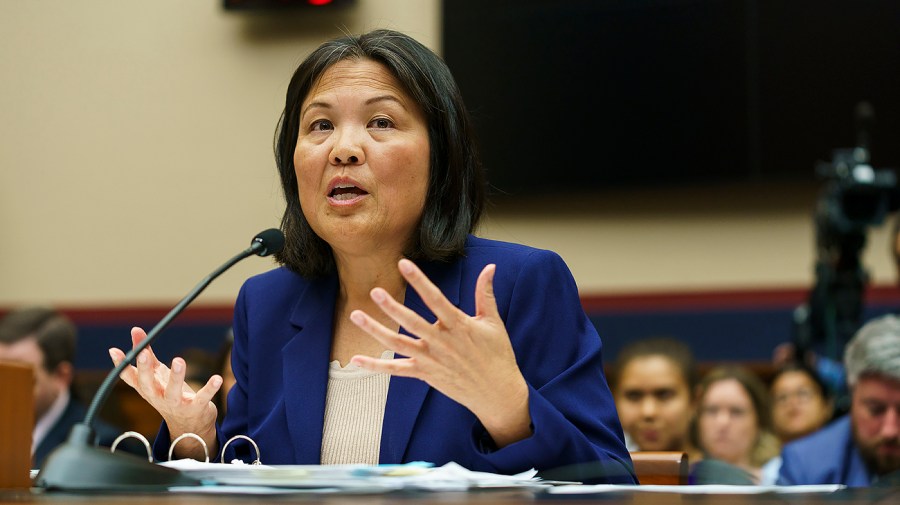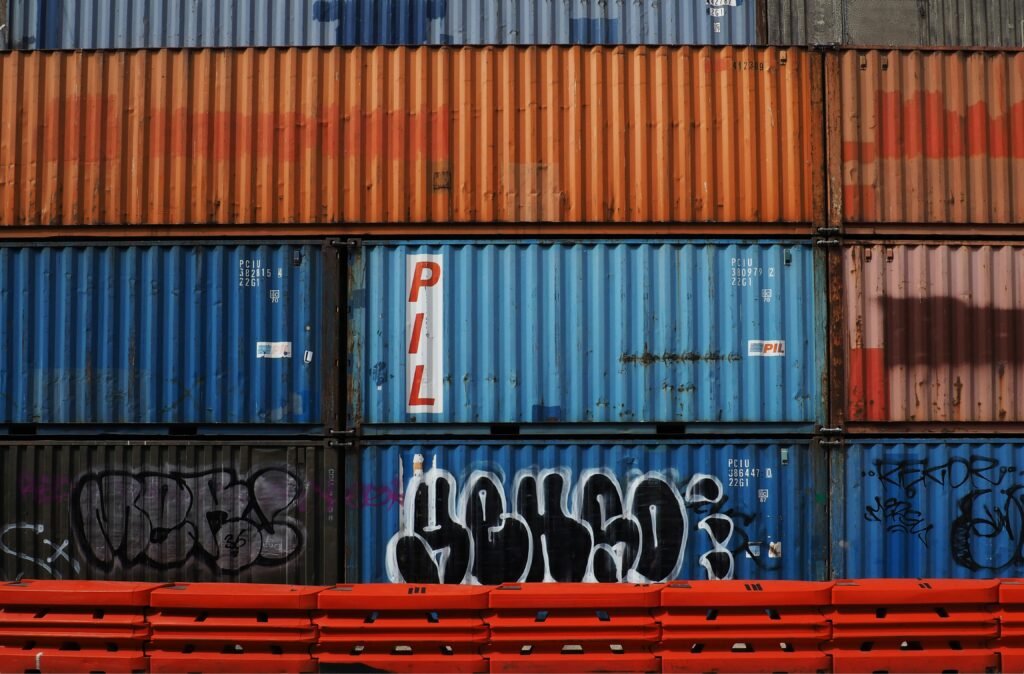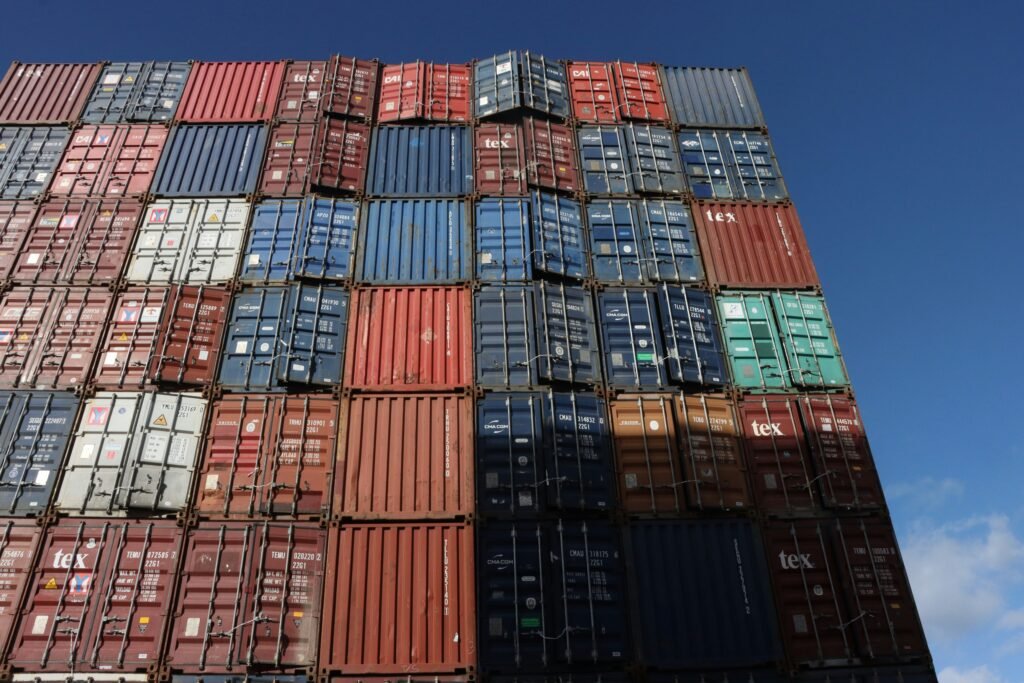Business
DOL cracks down on child labor while states loosen laws on July 28, 2023 at 3:26 pm Business News | The Hill

The Department of Labor (DOL) is cracking down on child labor violations even as multiple states have taken steps to loosen regulations around teenagers in the workplace.
At least 11 states have recently sought to make it easier to get minors in the workforce, including this year both Arkansas and Iowa, the latter of which moved to allow teenagers into meat packing facilities and for those as young as 16 to bartend.
Proponents say the changes will help young workers acquire valuable life skills and that parents should be the ones to decide when their kids are ready for a particular job.
But child advocates fear putting teenagers into increasingly dangerous work environments that are difficult to regulate and vulnerable to exploitation.
And on Thursday, the DOL and its Interagency Task Force to Combat Child Labor Exploitation announced new actions it will be taking after it found that child labor violations have risen 69 percent between 2018 and last year.
“Child labor is an issue that gets to the heart of who we are as a country and who we want to be. Like the President, we believe that any child working in a dangerous or hazardous environment is one child too many,” acting Secretary of Labor Julie Su said.
State efforts to change child labor laws come amid a tight labor market and a workers shortage.
“A lot of the legislators are citing that as a reason for weakening protections against child labor,” said Reid Maki, director of child labor advocacy for the National Consumers League and coordinator of the Child Labor Coalition. “We don’t think that’s a valid reason. We really don’t understand why you would want to balance the labor shortage against the backs of our vulnerable teen workers.”
In May, Iowa Gov. Kim Reynolds (R) signed a bill to expand the number of hours and places a teenager can work, allowing 14- and 15-year-olds to work in industrial areas such as meat coolers.
“With this legislation, Iowa joins 20 other states in providing tailored, common sense labor provisions that allow young adults to develop their skills in the workforce,” Reynolds said after signing the law.
“In Iowa, we understand there is dignity in work and we pride ourselves on our strong work ethic. Instilling those values in the next generation and providing opportunities for young adults to earn and save to build a better life should be available,” she added.
In Arkansas, Gov. Sarah Huckabee Sanders (R) in March signed the Youth Hiring Act of 2023, doing away with the requirement that children under the of age 16 must get permission from the state government to work.
Nick Stehle, vice president of communications for the Foundation for Government Accountability, a group that led the push for reform in Arkansas, stressed the importance working young can make on a person’s life.
“Keeping a schedule and having to collaborate with other people, having to work with other people and discovering your skills and shortcomings while you’re still you’re still very young, those are just all lessons that not only complement what you’re learning in the classroom, they add some real world context to it,” Stehle said.
Stehle emphasized all the reforms his group supported were in line with federal child labor laws.
“There’s been allegations that this is about making it so that teenagers can work in dangerous jobs or that they can work really late at night, stuff like that. And none of that is true,” he said.
Meanwhile, the DOL says it concluded 765 child labor cases between Oct. 1 and July 20. finding 4,474 children were employed in violation of federal standards.
Federal investigators found one instance in which the owner of six Nevada Sonic locations had committed more than 170 child labor violations, including employing 14- and 15-year-olds to operate deep fryers, work more hours than allowed and work at hours not allowed under federal guidelines.
In one tragic case that made national headlines earlier this month, a 16-year-old boy from Guatemala was killed in an on-the-job accident at a Mississippi poultry plant. Workers under the age of 18 are not allowed in such facilities for safety reasons, and DOL said at the time that it is investigating.
DOL plans to partner with other government offices such as the Office of Refugee Resettlement to give training on how to identify and report instances of child labor violations and update their guidelines.
It is also teaming up with the Department of Agriculture to demand that the country’s 18 largest meat and poultry processors take steps such as find out if illegal child labor is used anywhere in their supply chain in order to combat exploitive practices.
One of the causes experts say is behind the increase in child labor violations is the uptick in unaccompanied minors coming into the U.S.
“These are very vulnerable young people that need money and they may — they may be sending money back to family and Central America and Mexico. So they have a desperate need for money,” Maki said.
A New York Times investigation earlier this year showed migrant children, some as young as 13, at the brunt of work that violates federal standards.
In response, the U.S. will be working with the embassies of Colombia, El Salvador, Guatemala, Honduras and Mexico to take steps to combat child labor and educate migrants on the problem.
The increase in child labor violations combined with the changes to state laws have concerned advocates who are afraid the problem will only get worse.
“Our child labor laws are very common sense laws that really serve two purposes. They make sure children are not working in highly dangerous and hazardous jobs and that the work they do does not interfere with their development and their schooling,” said Laura Padin, director of work structures at the National Employment Law Project.
“These laws serve a really important purpose. It’s really disturbing to see this happening now,” Padin added.
Experts contend the new laws will harm poor children, children of color and undocumented children who would take these jobs out of necessity to survive.
“They’re seeking to expand employment to workers that can be paid less in order to keep wages low and still maintain the same levels of employment,” said Nina Mast, a state economic analyst for the Economic Policy Institute. “At the same time, you also have our broken immigration system that has resulted in many unaccompanied migrant youth in this country without work authorization and sort of compelled by their economic circumstances to work. And that’s really a recipe for exploitation because they lack sort of the legal rights and support to demand safe and age-appropriate work.”
Education, Administration, Business, State Watch, child labor laws The Department of Labor (DOL) is cracking down on child labor violations even as multiple states have taken steps to loosen regulations around teenagers in the workplace. At least 11 states have recently sought to make it easier to get minors in the workforce, including this year both Arkansas and Iowa, the latter of which…
Business
How Trump’s Tariffs Could Hit American Wallets

As the debate over tariffs heats up ahead of the 2024 election, new analysis reveals that American consumers could face significant financial consequences if former President Donald Trump’s proposed tariffs are enacted and maintained. According to a recent report highlighted by Forbes, the impact could be felt across households, businesses, and the broader U.S. economy.

The Household Cost: Up to $2,400 More Per Year
Research from Yale University’s Budget Lab, cited by Forbes, estimates that the average U.S. household could pay an additional $2,400 in 2025 if the new tariffs take effect and persist. This projection reflects the cumulative impact of all tariffs announced in Trump’s plan.
Price Hikes Across Everyday Goods
The tariffs are expected to drive up consumer prices by 1.8% in the near term. Some of the hardest-hit categories include:
- Apparel: Prices could jump 37% in the short term (and 18% long-term).
- Footwear: Up 39% short-term (18% long-term).
- Metals: Up 43%.
- Leather products: Up 39%.
- Electrical equipment: Up 26%.
- Motor vehicles, electronics, rubber, and plastic products: Up 11–18%.
- Groceries: Items like vegetables, fruits, and nuts could rise up to 6%, with additional increases for coffee and orange juice due to specific tariffs on Brazilian imports.

A Historic Tariff Rate and Economic Impact
If fully implemented, the effective tariff rate on U.S. consumers could reach 18%, the highest level since 1934. The broader economic consequences are also notable:
- GDP Reduction: The tariffs could reduce U.S. GDP by 0.4% annually, equating to about $110 billion per year.
- Revenue vs. Losses: While tariffs are projected to generate $2.2 trillion in revenue over the next decade, this would be offset by $418 billion in negative economic impacts.
How Businesses Are Responding
A KPMG survey cited in the report found that 83% of business leaders expect to raise prices within six months of tariff implementation. More than half say their profit margins are already under pressure, suggesting that consumers will likely bear the brunt of these increased costs.

What This Means for Americans
The findings underscore the potential for substantial financial strain on American families and businesses if Trump’s proposed tariffs are enacted. With consumer prices set to rise and economic growth projected to slow, the debate over tariffs is likely to remain front and center in the months ahead.
For more in-depth economic analysis and updates, stay tuned to Bolanlemedia.com.
Business
U.S. Limits Nigerian Non-Immigrant Visas to Three-Month Validity

In July 2025, the United States implemented significant changes to its visa policy for Nigerian citizens, restricting most non-immigrant and non-diplomatic visas to a single entry and a maximum validity of three months. This marks a departure from previous policies that allowed for multiple entries and longer stays, and has important implications for travel, business, and diplomatic relations between the two countries.

Key Changes in U.S. Visa Policy for Nigerians
- Single-Entry, Three-Month Limit: As of July 8, 2025, most non-immigrant visas issued to Nigerians are now valid for only one entry and up to three months.
- No Retroactive Impact: Visas issued prior to this date remain valid under their original terms.
- Reciprocity Principle: The U.S. cited alignment with Nigeria’s own visa policies for U.S. citizens as the basis for these changes.
- Enhanced Security Screening: Applicants are required to make their social media accounts public for vetting, and are subject to increased scrutiny for any signs of hostility toward U.S. institutions.

Rationale Behind the Policy Shift
- Security and Immigration Integrity: The U.S. government stated the changes are intended to safeguard the immigration system and meet global security standards.
- Diplomatic Reciprocity: These restrictions mirror the limitations Nigeria imposes on U.S. travelers, emphasizing the principle of fairness in international visa agreements.
- Potential for Further Action: The U.S. has indicated that additional travel restrictions could be introduced if Nigeria does not address certain diplomatic and security concerns.

Nigeria’s Updated Visa Policy
- Nigeria Visa Policy 2025 (NVP 2025): Introduced in May 2025, this policy features a new e-Visa system for short visits and reorganizes visa categories:
- Short Visit Visas (e-Visa): For business or tourism, valid up to three months, non-renewable, processed digitally within 48 hours.
- Temporary Residence Visas: For employment or study, valid up to two years.
- Permanent Residence Visas: For investors, retirees, and highly skilled individuals.
- Visa Exemptions: ECOWAS citizens and certain diplomatic passport holders remain exempt.
- Reciprocal Restrictions: Most short-stay and business visas for U.S. citizens are single-entry and short-term, reflecting reciprocal treatment.

Impact on Travelers and Bilateral Relations
- Nigerian Travelers: Face increased administrative requirements, higher costs, and reduced travel flexibility to the U.S.
- U.S. Travelers to Nigeria: Encounter similar restrictions, with most visas limited to single entry and short duration.
- Diplomatic Tensions: Nigerian officials have called for reconsideration of the U.S. policy, warning of negative effects on bilateral ties and people-to-people exchanges.
Conclusion
The U.S. decision to limit Nigerian non-immigrant visas to three months highlights the growing complexity and reciprocity in global visa regimes. Both countries are tightening their policies, citing security and fairness, which underscores the need for travelers and businesses to stay informed and adapt to evolving requirements.
Business
Nicki Minaj Demands $200 Million from Jay-Z in Explosive Twitter Rant

Nicki Minaj has once again set social media ablaze, this time targeting Jay-Z with a series of pointed tweets that allege he owes her an eye-popping $200 million. The outburst has reignited debates about artist compensation, industry transparency, and the ongoing power struggles within hip-hop’s elite circles.

The $200 Million Claim
In a string of tweets, Minaj directly addressed Jay-Z, writing, “Jay-Z, call me to settle the karmic debt. It’s only collecting more interest. You still in my top five though. Let’s get it.” She went further, warning, “Anyone still calling him Hov will answer to God for the blasphemy.” According to Minaj, the alleged debt stems from Jay-Z’s sale of Tidal, the music streaming platform he launched in 2015 with a group of high-profile artists—including Minaj herself, J. Cole, and Rihanna.
When Jay-Z sold Tidal in 2021, Minaj claims she was only offered $1 million, a figure she says falls dramatically short of what she believes she is owed based on her ownership stake and contributions. She has long voiced dissatisfaction with the payout, but this is the most public—and dramatic—demand to date.
Beyond the Money: Broader Grievances
Minaj’s Twitter storm wasn’t limited to financial complaints. She also:
- Promised to start a college fund for her fans if she receives the money she claims is owed.
- Accused blogs and online creators of ignoring her side of the story, especially when it involves Jay-Z.
- Warned content creators about posting “hate or lies,” saying, “They won’t cover your legal fees… I hope it’s worth losing everything including your account.”
She expressed frustration that mainstream blogs and platforms don’t fully cover her statements, especially when they involve Jay-Z, and suggested that much of the coverage she receives is from less reputable sources.

Satirical Accusations and Industry Critique
Minaj’s tweets took a satirical turn as she jokingly blamed Jay-Z for a laundry list of cultural grievances, including:
- The state of hip-hop, football, basketball, and touring
- The decline of Instagram and Twitter
- Even processed foods and artificial dyes in candy
She repeatedly declared, “The jig is up,” but clarified that her statements were “alleged and for entertainment purposes only.”
Political and Cultural Criticism
Minaj also criticized Jay-Z’s political involvement, questioning why he didn’t campaign more actively for Kamala Harris or respond to President Obama’s comments about Black men. While Jay-Z has a history of supporting Democratic campaigns, Minaj’s critique centered on more recent events and what she perceives as a lack of advocacy for the Black community.
The Super Bowl and Lil Wayne
Adding another layer to her grievances, Minaj voiced disappointment that Lil Wayne was not chosen to perform at the Super Bowl in New Orleans, a decision she attributes to Jay-Z’s influence in the entertainment industry.
Public and Industry Reaction
Despite the seriousness of her financial claim, many observers note that if Minaj truly believed Jay-Z owed her $200 million, legal action—not social media—would likely follow. As of now, there is no public record of a lawsuit or formal complaint.
Some fans and commentators see Minaj’s outburst as part of a larger pattern of airing industry grievances online, while others interpret it as a mix of personal frustration and performance art. Minaj herself emphasized that her tweets were “for entertainment purposes only.”

Conclusion
Nicki Minaj’s explosive Twitter rant against Jay-Z has once again placed the spotlight on issues of artist compensation and industry dynamics. Whether her claims will lead to further action or remain another dramatic chapter in hip-hop’s ongoing soap opera remains to be seen, but for now, the world is watching—and tweeting.

 Business1 week ago
Business1 week agoPros and Cons of the Big Beautiful Bill

 Advice3 weeks ago
Advice3 weeks agoWhat SXSW 2025 Filmmakers Want Every New Director to Know

 Film Industry3 weeks ago
Film Industry3 weeks agoFilming Yourself and Look Cinematic

 News2 weeks ago
News2 weeks agoFather Leaps Overboard to Save Daughter on Disney Dream Cruise

 Politics4 weeks ago
Politics4 weeks agoBolanle Newsroom Brief: Israel Strikes Iran’s Nuclear Sites — What It Means for the World

 Health2 weeks ago
Health2 weeks agoMcCullough Alleges Government Hid COVID Vaccine Side Effects

 Advice2 weeks ago
Advice2 weeks agoWhy 20% of Us Are Always Late

 Advice2 weeks ago
Advice2 weeks agoHow to Find Your Voice as a Filmmaker




























